#Lithium Battery Charge Management Chip
Explore tagged Tumblr posts
Text
Lithium Battery Charge Management Chip Market Analysis, Dynamics, Key Players, & Forecast till 2033
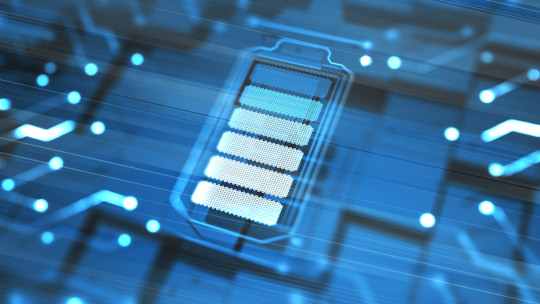
The competitive analysis of the Lithium Battery Charge Management Chip Market include a comprehensive analysis of market trends, competitor landscape, consumer behavior, and potential opportunities. It should cover key demographics, market size, growth projections, and risk factors. The report should also highlight the methodology used for data collection and analysis, presenting findings with visual aids such as charts and graphs. Additionally, recommendations and strategic insights for stakeholders to make informed decisions are crucial. The report should be concise, well-organized, and provide actionable information for businesses aiming to navigate the market effectively.
Key Function:
A Lithium Battery Charge Management Chip market research report serves to assess market dynamics, identify opportunities, and mitigate risks for businesses. It analyzes consumer preferences, competitor strategies, and economic trends. The report facilitates informed decision-making by presenting data on market size, growth potential, and emerging patterns. It aids in product development, pricing strategies, and market positioning. Additionally, market research reports help businesses understand their target audience, enhance marketing efforts, and optimize resource allocation. By offering actionable insights, these reports empower organizations to stay competitive, adapt to changing market conditions, and foster sustainable growth in a dynamic business environment.
Key Dynamics:
Market research reports capture vital dynamics, including market trends, competitive analysis, and consumer behavior. They reveal market size, growth projections, and regional nuances. SWOT analysis examines internal strengths and weaknesses, along with external opportunities and threats. Consumer insights delve into preferences, impacting product development and marketing strategies. The competitive landscape unveils key players, strategies, and market shares. Regulatory factors and industry challenges are explored, aiding risk assessment. Timely and accurate information empowers businesses to adapt strategies, capitalize on opportunities, and navigate challenges, ensuring informed decision-making and sustained competitiveness in dynamic markets.
Receive the FREE Sample Report of Lithium Battery Charge Management Chip Market Research Insights @ https://stringentdatalytics.com/sample-request/lithium-battery-charge-management-chip-market/8344/
Market Segmentations:
Global Lithium Battery Charge Management Chip Market: By Company • Analog Devices • Texas Instruments • STMicroelectronics • NXP • Renesas • Cypress Semiconductor • Microchip • Renesas Electronics Corporation • LAPIS Semiconductor • Intersil • ROHM • Petrov Group • Hycon Technology • Diodes Incorporated • Fujitsu • Semtech • Vishay • ON Semiconductor • Sino Wealth Electronic Ltd. Global Lithium Battery Charge Management Chip Market: By Type • SL1053 • TP4056 • HL7016 • CS0301 • Others Global Lithium Battery Charge Management Chip Market: By Application • Consumer Electronics • Industrial • Automotive • Other
Regional Analysis of Global Lithium Battery Charge Management Chip Market
All the regional segmentation has been studied based on recent and future trends, and the market is forecasted throughout the prediction period. The countries covered in the regional analysis of the Global Lithium Battery Charge Management Chip market report are U.S., Canada, and Mexico in North America, Germany, France, U.K., Russia, Italy, Spain, Turkey, Netherlands, Switzerland, Belgium, and Rest of Europe in Europe, Singapore, Malaysia, Australia, Thailand, Indonesia, Philippines, China, Japan, India, South Korea, Rest of Asia-Pacific (APAC) in the Asia-Pacific (APAC), Saudi Arabia, U.A.E, South Africa, Egypt, Israel, Rest of Middle East and Africa (MEA) as a part of Middle East and Africa (MEA), and Argentina, Brazil, and Rest of South America as part of South America.
Click to Purchase Lithium Battery Charge Management Chip Market Research Report @ https://stringentdatalytics.com/purchase/lithium-battery-charge-management-chip-market/8344/
Reseason To Purchase:
Purchasing a market research report is essential for businesses seeking a competitive edge. It provides in-depth insights into market trends, consumer behavior, and competitor strategies. This knowledge empowers informed decision-making, mitigates risks, and identifies growth opportunities. Market reports streamline strategic planning, enhance product development, and optimize resource allocation. For businesses entering new markets, these reports offer critical data for successful market entry. Additionally, the comprehensive analysis instills investor confidence, ensures regulatory compliance, and saves time compared to independent research efforts. Ultimately, investing in market research reports is a strategic move that enhances efficiency, minimizes uncertainties, and fosters sustainable business growth.
About Stringent Datalytics
Stringent Datalytics offers both custom and syndicated market research reports. Custom market research reports are tailored to a specific client's needs and requirements. These reports provide unique insights into a particular industry or market segment and can help businesses make informed decisions about their strategies and operations.
Syndicated market research reports, on the other hand, are pre-existing reports that are available for purchase by multiple clients. These reports are often produced on a regular basis, such as annually or quarterly, and cover a broad range of industries and market segments. Syndicated reports provide clients with insights into industry trends, market sizes, and competitive landscapes. By offering both custom and syndicated reports, Stringent Datalytics can provide clients with a range of market research solutions that can be customized to their specific needs.
Reach US
Stringent Datalytics
+1 346 666 6655
Social Channels:
Linkedin | Facebook | Twitter | YouTube
1 note
·
View note
Text
Application of Bluetooth BMS Chips in Smart Battery Swap Cabinets Recommendation: KT6368A Dual-Mode Bluetooth Chip

Related Questions
What is the main function of the Bluetooth BMS chip in a smart battery swap cabinet?
What are the advantages of using the KT6368A dual-mode Bluetooth chip in smart battery swap cabinets?
How to evaluate the performance of a Bluetooth BMS chip in battery swap applications?
1. Introduction
The smart battery swap cabinet is an innovative solution that has emerged as technology has matured, addressing significant industry pain points.
Problem Solved: Delivery riders and couriers no longer need to compete for charging spots or buy multiple e-bikes to maintain productivity.
Impact: Logistics and food delivery efficiency has greatly improved, while safety risks have been reduced.
Battery Integration: Most batteries in swap cabinets now include BMS (Battery Management System) protection boards, typically communicating with the backend via 4G.
This product category reflects China's rapid advancements in chip technology and manufacturing. "Made in China" is no longer just about low cost—it now represents quality, efficiency, and continuous innovation.

Why the KT6368A?
Balanced Performance: While not the cheapest or the most power-efficient, the KT6368A dual-mode Bluetooth chip offers the best cost-efficiency and low power consumption trade-off.
Optimal Solution: No alternatives match its balance—it's simply the right fit.
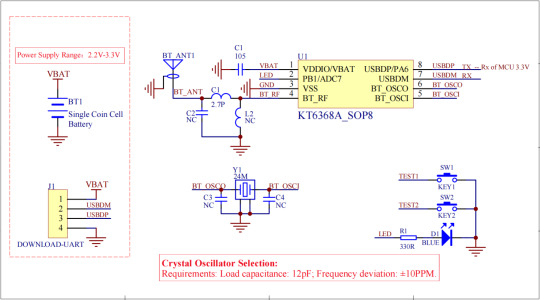
2. Chip Overview
The KT6368A is a dual-mode Bluetooth 5.1 data chip with key highlights:
Ultra-compact size
Ultra-low cost
Simple UART AT command interface & data pass-through
Minimal development difficulty & cost
Key Features:
✅ Minimal Reference Design: Only one capacitor + one crystal oscillator needed. ✅ Proven Reliability: Already in mass production with real-world validation.

3. Application Summary
The KT6368A is particularly advantageous for BMS lithium battery products in smart swap cabinets:
✔ Cost Reduction – Lowers overall system costs.
✔ Flexible Design – Compatible with various mainboard shapes.
✔ Balanced Performance – Not the lowest power consumption, but the best cost-to-efficiency ratio.

Final Thought:
"It's not about being the absolute best—it's about being the right fit."
0 notes
Text
Battery Management System Chip Market: Role of Semiconductors in Enabling Smart Devices
MARKET INSIGHTS
The global Battery Management System Chip Market size was valued at US$ 1.78 billion in 2024 and is projected to reach US$ 3.56 billion by 2032, at a CAGR of 10.1% during the forecast period 2025-2032.
Battery Management System Chips are specialized integrated circuits designed to monitor and manage the performance of rechargeable battery packs. These chips play a critical role in ensuring battery safety, optimizing energy efficiency, and extending battery lifespan through functions like cell voltage monitoring, current measurement, temperature sensing, and charge balancing. The market includes key chip types such as Analog Front End (AFE) chips, Analog-to-Digital Converter (ADC) chips, and Digital Isolator chips.
The market growth is driven by increasing adoption of electric vehicles, which accounted for nearly 14% of global car sales in 2023, along with expanding renewable energy storage applications. Furthermore, advancements in lithium-ion battery technologies and growing demand for smart battery solutions in consumer electronics are accelerating market expansion. Major players like Texas Instruments, Analog Devices, and STMicroelectronics are investing heavily in developing more sophisticated BMS chips to cater to these evolving needs.
BATTERY MANAGEMENT SYSTEM CHIP MARKET DYNAMICS
MARKET DRIVERS
Rapid Electrification of Automotive Sector Accelerating BMS Chip Demand
The automotive industry’s transition to electric vehicles represents the most significant growth driver for battery management system (BMS) chips. With global EV sales projected to reach 45 million units annually by 2030, representing 45% of total car sales, the need for advanced battery monitoring solutions has never been greater. Modern BMS chips provide critical functions including cell voltage monitoring, state-of-charge calculation, and thermal management – all essential for maximizing battery performance and safety. Leading manufacturers are developing chips with monitoring accuracy within ±1mV to meet the stringent requirements of next-generation EVs.
Energy Storage Expansion Creating New Demand Verticals
Utility-scale energy storage deployments are projected to grow at 28% CAGR through 2030, driving substantial demand for BMS solutions. Grid-connected battery systems require sophisticated monitoring capabilities to manage charge/discharge cycles and prevent thermal runaway in large battery arrays. Recent technological advancements have enabled BMS chips to support battery configurations ranging from 12V to 1500V systems, making them suitable for both residential solar storage and industrial-scale installations. The growing adoption of lithium iron phosphate (LFP) batteries, which require precise voltage balancing, is further propelling market growth.
5G Infrastructure Rollout Expanding Network Applications
The global expansion of 5G networks is creating new opportunities for BMS chips in telecommunications backup power systems. Each 5G base station typically requires multiple backup battery units to ensure uninterrupted operation during power outages. Advanced BMS chips are being developed specifically for telecom applications, featuring ultra-low power consumption (below 5μA in sleep mode) and extended temperature range operation (-40°C to +125°C). With over 7 million 5G base stations expected to be deployed worldwide by 2026, this represents a significant growth avenue.
MARKET RESTRAINTS
Semiconductor Supply Chain Volatility Impacting Production
The BMS chip market continues to face challenges from ongoing semiconductor supply chain disruptions. While the worst shortages have eased, lead times for analog and mixed-signal ICs remain extended at 26+ weeks for many suppliers. This creates production bottlenecks for BMS manufacturers who require specialized components like precision voltage references and isolated gate drivers. The situation is further complicated by geopolitical factors affecting chip fabrication capacity in key regions.
Other Restraints
Design Complexity Constraints Developing BMS ICs that meet automotive safety standards (such as ISO 26262 ASIL-D) requires extensive validation and qualification processes. Many chipmakers struggle with balancing functional safety requirements against power consumption and cost targets, particularly for price-sensitive consumer applications.
Battery Technology Evolution The rapid pace of battery chemistry innovation (from NMC to LFP to solid-state) creates challenges for BMS chip standardization. Chipmakers must constantly adapt their designs to support emerging battery technologies while maintaining backward compatibility.
MARKET CHALLENGES
Thermal Management Requirements Increasing Design Complexity
As battery systems push for higher energy densities, thermal management has become a critical challenge for BMS chip designers. Modern chips must accurately monitor multiple temperature zones while operating in environments that can exceed 105°C. Implementing reliable isolation barriers that maintain signal integrity under these conditions requires sophisticated chip architectures and advanced packaging techniques.
Other Challenges
Cybersecurity Vulnerabilities Connected BMS solutions face growing cybersecurity threats, requiring chipmakers to implement hardware-based security features like cryptographic accelerators and secure boot. The automotive industry’s move to over-the-air updates adds further complexity to security implementations.
Testing and Validation Costs Qualification testing for automotive-grade BMS chips can account for 30-40% of total development costs. The extensive environmental, reliability, and functional safety testing required for certification creates significant barriers for smaller players.
MARKET OPPORTUNITIES
AI-Enhanced Predictive Maintenance Creating New Value Propositions
The integration of machine learning capabilities into BMS chips represents a major growth opportunity. Next-generation devices are incorporating dedicated AI accelerators to enable predictive analytics for battery health monitoring. These advanced chips can detect subtle changes in cell impedance and charging patterns to predict failures before they occur. Industrial applications for these smart BMS solutions are particularly promising, with predictive maintenance potentially reducing downtime by up to 50% in critical applications.
Wireless BMS Architectures Opening New Design Possibilities
The development of wireless BMS solutions eliminates the need for complex wiring harnesses in battery packs, reducing weight and improving reliability. Leading semiconductor companies have begun sampling chips with integrated 2.4GHz radios that maintain robust communication even in electromagnetically noisy environments. This technology is particularly valuable for electric aviation applications where weight reduction is critical.
Second-Life Battery Applications Driving Aftermarket Growth
The emerging market for second-life battery systems in stationary storage applications creates new opportunities for specialized BMS solutions. These systems require chips with enhanced diagnostics capabilities to assess the remaining useful life of repurposed battery cells. As the first wave of EV batteries reaches end-of-life, this segment is projected to grow at 32% CAGR through 2030.
BATTERY MANAGEMENT SYSTEM CHIP MARKET TRENDS
Rising Demand for Electric Vehicles Accelerates BMS Chip Adoption
The global battery management system (BMS) chip market is experiencing robust growth, primarily driven by the accelerating adoption of electric vehicles (EVs). With EV sales projected to exceed 45 million units annually by 2030, the demand for sophisticated BMS chips capable of monitoring lithium-ion battery health has surged by over 30% year-over-year. These chips play a critical role in optimizing battery performance, extending lifespan through precise charge balancing, and preventing thermal runaway incidents. Recent advancements in predictive analytics integration allow BMS chips to forecast battery degradation patterns with 92-95% accuracy, significantly reducing maintenance costs for fleet operators.
Other Trends
Energy Storage Expansion
Utility-scale energy storage deployments are creating new opportunities for advanced BMS solutions, with grid-scale battery installations growing at 28% CAGR globally. Modern BMS chips now support bidirectional power flow management essential for vehicle-to-grid (V2G) applications, enabling EVs to function as distributed energy resources. This technological shift is particularly evident in markets like Germany and California where regulatory frameworks mandate smarter grid integration capabilities.
Semiconductor Advancements Reshaping BMS Architectures
The semiconductor industry’s shift toward 40nm and smaller process nodes is enabling BMS chips to achieve 40% power efficiency improvements compared to previous generations. Leading manufacturers are integrating AI co-processors directly into BMS chipsets, allowing real-time adaptive tuning of battery parameters based on usage patterns. This coincides with growing adoption of wireless BMS architectures in automotive applications, eliminating up to 90% of wiring harness weight while improving system reliability. The transition to silicon carbide (SiC) and gallium nitride (GaN) power components in BMS designs is further enhancing thermal management capabilities critical for fast-charging scenarios.
Industrial IoT Convergence
Industrial applications are witnessing increased BMS chip integration as part of Industry 4.0 initiatives, particularly in mission-critical backup power systems. Modern BMS solutions now incorporate industrial IoT protocols like OPC UA for seamless integration with plant-wide monitoring systems. This is driving demand for chips with enhanced cybersecurity features including hardware-based encryption and secure boot capabilities to protect against potential attacks on energy infrastructure.
COMPETITIVE LANDSCAPE
Key Industry Players
Innovation and Strategic Expansion Drive Market Leadership
The global Battery Management System (BMS) Chip market is highly competitive, characterized by the presence of established semiconductor giants and emerging specialized players. Texas Instruments and Analog Devices dominate the landscape, collectively accounting for over 30% of the market share in 2024. Their leadership stems from decades of expertise in power management ICs and extensive R&D investments exceeding $1 billion annually for BMS-related technologies.
STMicroelectronics and NXP Semiconductors have significantly strengthened their positions through strategic acquisitions and partnerships with automotive OEMs. The growing demand for electric vehicles (EVs) has particularly benefited these players, as EV battery systems require advanced BMS chips for thermal balancing and charge optimization.
Meanwhile, Asian manufacturers like Renesas Electronics and ROHM Semiconductor are gaining traction through cost-competitive solutions tailored for consumer electronics and energy storage applications. Their regional manufacturing advantages enable faster time-to-market for Chinese and Southeast Asian battery pack producers.
Recent developments show companies accelerating silicon carbide (SiC) and gallium nitride (GaN) based BMS chip designs. onsemi‘s 2023 acquisition of GT Advanced Technologies strengthened its position in high-power EV charging solutions, while Microchip Technology launched a new family of isolated gate drivers specifically for next-gen battery systems.
List of Key BMS Chip Manufacturers Profiled
Texas Instruments (U.S.)
Analog Devices (U.S.)
STMicroelectronics (Switzerland)
NXP Semiconductors (Netherlands)
Renesas Electronics (Japan)
ROHM Semiconductor (Japan)
onsemi (U.S.)
Microchip Technology (U.S.)
Maxim Integrated (U.S.)
Semtech (U.S.)
Skyworks Solutions (U.S.)
Segment Analysis:
By Type
Analog Front End Chips Lead the Market Due to Critical Battery Monitoring Functions
The market is segmented based on type into:
Analog Front End Chip
Subtypes: Voltage monitoring, current sensing, and temperature sensing
Analog to Digital Converter Chip
Digital Isolator Chip
Power Management ICs
Others
By Application
Automotive and Transportation Segment Dominates with Rising EV Adoption
The market is segmented based on application into:
Automotive and Transportation
Energy and Power
Network and Telecommunication
Industrial Automation
Consumer Electronics
By Battery Type
Lithium-ion Battery Management Systems Hold Largest Share
The market is segmented based on battery type into:
Lithium-ion
Lead-acid
Nickel-based
Others
By Component
Integrated Circuits Form the Core of BMS Solutions
The market is segmented based on component into:
Integrated Circuits
Power Modules
Passive Components
Software
Regional Analysis: Battery Management System Chip Market
North America The North American Battery Management System (BMS) chip market benefits from strong demand in electric vehicles (EVs) and renewable energy storage applications. Stringent safety regulations, such as those imposed by UL and IEEE standards, along with substantial investments in EV infrastructure (including the Biden administration’s $7.5 billion EV charging network initiative), are accelerating market growth. Major OEMs like Tesla, GM, and Ford are integrating advanced BMS solutions to enhance battery performance and safety. The region also leads in research and development of high-efficiency BMS chips, focusing on fast charging and thermal management technologies. Local semiconductor firms such as Texas Instruments and Analog Devices dominate supply, with cloud-based battery analytics gaining traction to optimize performance across smart grid applications.
Europe Europe’s BMS chip market is propelled by ambitious sustainability goals under the European Green Deal, which mandates a 55% reduction in carbon emissions by 2030. The EU’s strict regulations on battery recycling (under the new Battery Regulation) necessitate advanced BMS chips for state-of-health monitoring and second-life applications. Automotive OEMs like Volkswagen and BMW are driving demand for multi-cell battery management solutions in their expanding EV lineups. While the region relies on imports for some semiconductor components, companies like STMicroelectronics and NXP Semiconductors are strengthening local supply chains through R&D partnerships. Energy storage systems, particularly in Germany and Scandinavia, are adopting BMS chips with real-time diagnostics to support renewable integration.
Asia-Pacific Asia-Pacific dominates global BMS chip consumption, accounting for over 50% of market share due to expansive EV production in China and battery manufacturing in South Korea. China’s “New Energy Vehicle” industrial policy and subsidies have propelled local players like CATL to adopt sophisticated BMS solutions for lithium-ion batteries. However, the market remains price-sensitive, with mid-range BMS chips preferred for consumer electronics and entry-level EVs. Japan and South Korea lead in high-precision BMS chip development for automotive-grade applications, while India’s nascent EV ecosystem presents long-term opportunities. Battery recycling initiatives in the region are gradually increasing demand for BMS chips with enhanced lifecycle tracking capabilities.
South America South America’s BMS chip market is in early growth stages, primarily driven by Brazil’s budding EV sector and Chile’s lithium production for global battery supply chains. While regional adoption lags behind global trends, increasing investments in solar-plus-storage projects are creating demand for basic BMS solutions. Economic instability and limited local semiconductor manufacturing constrain market expansion, with most BMS chips imported from Asia or North America. However, government incentives for renewable energy adoption and rising awareness about battery safety standards are expected to gradually boost market prospects. The region shows particular promise for cost-effective BMS chips in two-wheeler electrification and off-grid power systems.
Middle East & Africa The MEA region exhibits niche demand for BMS chips, mainly supporting telecom tower backup systems and small-scale renewable installations. Gulf Cooperation Council (GCC) countries are investing in utility-scale battery storage to complement solar power projects, requiring robust BMS solutions for extreme temperature operation. South Africa leads in automotive battery replacements, while North African nations show potential for BMS adoption in microgrid applications. Limited local expertise in battery technologies and reliance on imported systems slow market maturation. Nevertheless, planned EV infrastructure projects in the UAE and Saudi Arabia, alongside growing data center investments, are expected to drive steady BMS chip demand through 2030.
Report Scope
This market research report provides a comprehensive analysis of the global and regional Battery Management System Chip markets, covering the forecast period 2025–2032. It offers detailed insights into market dynamics, technological advancements, competitive landscape, and key trends shaping the industry.
Key focus areas of the report include:
Market Size & Forecast: Historical data and future projections for revenue, unit shipments, and market value across major regions and segments. The Global Battery Management System Chip market was valued at USD million in 2024 and is projected to reach USD million by 2032.
Segmentation Analysis: Detailed breakdown by product type (Analog Front End Chip, Analog to Digital Converter Chip, Digital Isolator Chip), application (Automotive and Transportation, Energy and Power, Network and Telecommunication), and end-user industry to identify high-growth segments and investment opportunities.
Regional Outlook: Insights into market performance across North America, Europe, Asia-Pacific, Latin America, and the Middle East & Africa, including country-level analysis where relevant.
Competitive Landscape: Profiles of leading market participants including Analog Devices, Texas Instruments, STMicroelectronics, and NXP Semiconductors, including their product offerings, R&D focus, manufacturing capacity, pricing strategies, and recent developments such as mergers, acquisitions, and partnerships.
Technology Trends & Innovation: Assessment of emerging technologies, integration of AI/IoT in battery management, semiconductor design trends, fabrication techniques, and evolving industry standards.
Market Drivers & Restraints: Evaluation of factors driving market growth such as EV adoption and renewable energy storage along with challenges including supply chain constraints, regulatory issues, and market-entry barriers.
Stakeholder Analysis: Insights for component suppliers, OEMs, system integrators, investors, and policymakers regarding the evolving ecosystem and strategic opportunities.
Related Reports:https://semiconductorblogs21.blogspot.com/2025/06/chip-solid-tantalum-capacitor-market.htmlhttps://semiconductorblogs21.blogspot.com/2025/06/global-electrical-resistance-probes.htmlhttps://semiconductorblogs21.blogspot.com/2025/06/high-temperature-tantalum-capacitor.htmlhttps://semiconductorblogs21.blogspot.com/2025/06/global-link-choke-market-innovations.htmlhttps://semiconductorblogs21.blogspot.com/2025/06/multirotor-brushless-motors-market.htmlhttps://semiconductorblogs21.blogspot.com/2025/06/planar-sputtering-target-market.htmlhttps://semiconductorblogs21.blogspot.com/2025/06/ferrite-core-choke-market-opportunities.htmlhttps://semiconductorblogs21.blogspot.com/2025/06/float-zone-silicon-crystal-market.htmlhttps://semiconductorblogs21.blogspot.com/2025/06/carbon-composition-resistors-market.htmlhttps://semiconductorblogs21.blogspot.com/2025/06/resistor-network-array-market-analysis.htmlhttps://semiconductorblogs21.blogspot.com/2025/06/melf-resistors-market-key-drivers-and.htmlhttps://semiconductorblogs21.blogspot.com/2025/06/metal-foil-resistors-market.htmlhttps://semiconductorblogs21.blogspot.com/2025/06/metal-oxidation-resistors-market-size.htmlhttps://semiconductorblogs21.blogspot.com/2025/06/ferrite-toroid-coils-market-growth.htmlhttps://semiconductorblogs21.blogspot.com/2025/06/vacuum-fluorescent-displays-market.html
0 notes
Text
Why Your Business Needs Battery Warranty Management Software

There’s a point where sticky notes, spreadsheets, and endless WhatsApp chats just don’t cut it anymore. If you’re in the business of batteries—selling, servicing, or scaling—you know that warranty claims can turn into a maze faster than a lithium-ion cell can overheat.
From different usage conditions to unpredictable failure patterns, managing battery warranties is not for the faint-hearted. And in an industry where downtime means lost trust and lost revenue, speed and accuracy aren’t optional—they are everything.
That is where a powerful battery warranty management software steps in. It does not just store claims; it streamlines your entire post-sales ecosystem. Think faster claims, cleaner data, happier customers, and teams that stop playing email ping-pong.
Welcome to the future of warranty management. It’s faster, sharper, and built to handle the charge.
Bad Warranty Processes Bleed Money and Trust Fast
The impact of mismanaged warranties isn’t just a back-office problem. It's a full-blown business bottleneck. When your team spends hours manually locating paperwork or validating serial numbers, efficiency tanks.
Misfiled or fraudulent claims can chip away at profit margins. Customers stuck in limbo grow frustrated, and service teams scramble to keep up with disconnected systems. Worse still, regulatory audits can go sideways without proper documentation.
Warranty chaos doesn’t just slow down operations—it hits where it hurts most: your reputation and your bottom line.
Battery Warranties Come With Built-In Complexity
Batteries don’t live easy lives. Usage varies wildly—what works in a solar setup may not in an e-scooter. That alone makes warranty terms a game of precision. Add to that discharge cycles, temperature exposure, charging behavior, and real-time diagnostics, and you’ve got yourself a data-driven puzzle.
Some claims require field testing. Others need photo evidence. And don’t even start on the logistics of returns, replacements, or dealer-level coordination.
A basic ticketing tool or Excel sheet won’t survive this level of complexity—it needs intelligence built for batteries.
Claim Smarter, Not Harder With the Right Software
A robust battery warranty management software eliminates the manual mess. It automates verification using QR codes or serial numbers and checks claims against real-time data in seconds.
No guesswork. No fake claims. No endless back-and-forths. Just fast, smart validations that your team and your customers can trust.
It’s not just automation—it’s peace of mind on autopilot.
One Source of Truth for Everyone Involved
When sales teams, dealers, and service centers all operate on different systems, things slip through the cracks. Warranty details get buried in inboxes. Customers get different answers from different people. That’s how trust erodes—silently, and quickly.
With centralized, cloud-based battery warranty management software, everyone sees the same data in real time. Claim statuses. Service notes. Warranty periods. All updated and accessible from anywhere.
You’re not just fixing batteries—you’re fixing communication, too.
Faster Resolutions Mean Stronger Customer Loyalty
Nobody enjoys waiting for updates—especially customers who rely on your battery to power their ride, home, or business. When claims move slowly, so does your brand’s credibility.
Automated workflows inside the software move things along—notifications get sent, technicians get assigned, and approvals happen faster. The result? Customers who feel valued. Teams that feel empowered. And a business that runs like a well-oiled machine.
Service isn’t just a cost—it’s your most powerful retention tool.
Insights That Turn Service Data Into Strategic Action
Data without insight is noise. But with intelligent analytics built into your battery warranty management software, patterns start to emerge. You’ll see which models are failing more often, what regions face higher returns, and where service bottlenecks slow things down.
These insights help engineering teams build better batteries. They guide procurement decisions. They even help you negotiate smarter warranties with suppliers.
When your service desk starts informing your product roadmap, you know you’re doing it right.
Modern Tools That Keep You Future-Ready
A great battery warranty management software doesn’t just solve today’s problems—it prepares you for what’s next. Think API integrations with your CRM and ERP systems, mobile accessibility for field agents, role-based access for security, and compatibility with IoT-backed smart batteries.
As your business grows, so does the software—scaling effortlessly to handle more products, more customers, and more complexity without the chaos.
The future doesn’t wait. Neither should your tech.
The Final Word: Warranty Can Be a Winning Strategy
Battery businesses that thrive aren’t just building better products—they’re delivering better experiences. And that experience doesn’t stop at the sale—it extends into how quickly and professionally you handle a claim.
Investing in reliable, cloud-based battery warranty management software is one of the smartest moves you can make. It cuts costs, strengthens your brand, builds trust, and turns service into a strategic advantage.
Because when your warranty system works like a charm, your whole business shines.
0 notes
Text
AI Boom, E-Waste Doom Why India Needs Smarter Tech Disposal

The rapid rise of AI and smart technology in India is transforming the way we live, work, and interact with the world. But as the tech landscape advances, so does a less-talked-about crisis: e-waste. With every new device, there’s an old one that gets discarded, creating mountains of electronic waste that threaten both our environment and data security. In this age of digital innovation, India urgently needs smarter, more responsible solutions for tech disposal, and companies like Techazar are leading the charge to address this growing problem.
The AI-Era E-Waste Challenge: What’s at Stake?
As India embraces AI-powered devices, smart sensors, and the Internet of Things (IoT), the country is also facing an unprecedented challenge in managing the waste generated by these high-tech products. Devices that once seemed futuristic like AI laptops, smartphones, and wearables are now being replaced by newer models at an ever-increasing pace. While these innovations improve productivity and quality of life, they also contribute to the digital waste crisis.
AI devices, which include advanced AI chips and lithium-ion batteries, are often difficult to recycle. The components are complex, hazardous, and, without proper disposal, can leak toxic substances into the environment. India’s e-waste generation is expected to surpass 2 million tons annually, with much of this waste consisting of smart tech and AI hardware.
Why Traditional Disposal Methods Aren’t Enough
Simply throwing away outdated devices or relying on traditional recycling methods isn’t enough in today’s AI-powered world. For instance, most smart devices contain materials like rare earth metals and plastic composites that can’t easily be separated using conventional e-waste processing. Additionally, these devices often store sensitive data, and improper disposal could lead to data breaches.
This makes it clear: India needs a solution that goes beyond just recycling it needs a comprehensive, secure, and environmentally responsible disposal system.
The Role of Techazar in Smarter E-Waste Disposal
At Techazar, we understand that proper e-waste management is essential for both environmental sustainability and data security. As India continues to grow as a hub for digital innovation, the demand for smarter e-waste disposal solutions has never been greater. Here’s how Techazar is addressing the issue:
Certified Data Destruction: We ensure that all devices are thoroughly wiped of personal and business data using industry-leading methods, offering a secure solution to prevent data theft.
CPCB-Approved Processes: Techazar adheres to the highest standards in e-waste recycling, following guidelines set by the Central Pollution Control Board (CPCB) and ISO certifications. Our processes ensure that all e-waste is handled in a way that minimizes harm to the environment.
Pan-India Pickup Services: Whether in Bengaluru, Chennai, or Hyderabad, Techazar provides nationwide services for the collection, recycling, and disposal of tech waste, making it easy for businesses and individuals to contribute to a sustainable future.
Refurbishment and Reuse: We not only dispose of old devices but also refurbish them when possible. Refurbishing extends the life of products, reduces waste, and promotes a circular economy.
India’s Growing Need for Sustainable E-Waste Solutions
With the rapid pace of AI adoption and tech consumption, the need for smarter tech disposal is becoming critical. As more businesses and consumers shift toward AI-driven solutions, they must also embrace responsible e-waste management. Companies like Techazar are at the forefront of this change, ensuring that tech waste is processed securely and sustainably.
Adopting a circular economy model in tech disposal can help reduce the environmental burden of e-waste. By recycling valuable metals and components, Techazar not only prevents pollution but also supports the reuse of essential materials, contributing to a more sustainable future.
The Future of Smarter Disposal: A Call to Action
India is entering an era of digital transformation, with AI driving the next wave of growth. However, this progress should not come at the cost of our environment or our security. By adopting smarter, more responsible disposal practices, we can ensure that India’s digital revolution doesn’t lead to an environmental crisis.
Techazar is committed to offering innovative and sustainable e-waste management solutions that align with CPCB regulations, ISO standards, and EPR guidelines. We urge businesses, government bodies, and individuals to take the necessary steps to protect our planet from the mounting threat of AI-driven e-waste.
Conclusion: Embrace Smarter Tech Disposal with Techazar
The AI boom has the potential to transform India, but it also presents a looming crisis in e-waste management. With companies like Techazar offering secure, certified e-waste disposal and recycling services, we have the tools to combat this growing problem. It’s time for India to adopt smarter tech disposal practices, ensuring a sustainable and secure future for both technology and the environment.
Ready to recycle responsibly? Discover more at www.techazar.in.
#Ewaste#TechDisposal#SustainableTech#SmartTechWaste#DigitalWaste#AIRevolution#TechBoom#EwasteIndia#EwasteManagementIndia#RecyclingIndia#ChennaiRecycling#BangaloreRecycling#HyderabadEwaste#PanIndiaServices#EWasteSolutions#SecureDataDestruction#ISOCertified#CPCBCompliant#EPRReady#ITRecycling#Techazar#TechazarSolutions#GoGreenWithTechazar
0 notes
Text
Cắm sạc MacBook 24/24: Có hại không?
Nhiều người lo ngại rằng việc cắm sạc MacBook liên tục sẽ làm chai pin. Tuy nhiên, các dòng MacBook đời mới – đặc biệt là những mẫu dùng chip Apple Silicon như M1, M2 – đều được trang bị công nghệ quản lý pin thông minh. Khi pin đạt mức 100%, hệ thống sẽ tự động ngắt sạc và sử dụng nguồn điện trực tiếp từ adapter thay vì tiếp tục nạp vào pin, giúp giảm thiểu tình trạng chai pin.

Apple cũng đã tích hợp tính năng Battery Health Management trong macOS, giúp kéo dài tuổi thọ pin bằng cách học thói quen sử dụng của người dùng và điều chỉnh mức sạc tối ưu (thường chỉ sạc đến 80% nếu bạn hay dùng sạc liên tục). Tính năng này có thể được bật/tắt trong phần System Settings > Battery.
Xem thêm: Có nên cắm sạc Macbook 24 24?
✅ Lợi ích khi cắm sạc MacBook 24/24
Hiệu suất hoạt động tối ưu Khi MacBook được cắm sạc, máy có thể hoạt động ở hiệu năng cao hơn – đặc biệt trong các tác vụ nặng như chỉnh sửa video, lập trình, hoặc chơi game. Nguồn điện trực tiếp ổn định hơn pin và giúp máy hoạt động mượt mà hơn.
Tránh hết pin đột ngột Việc luôn cắm sạc giúp bạn yên tâm khi làm việc mà không lo MacBook tắt nguồn vì hết pin.
Sử dụng như máy tính để bàn Với màn hình rời, chuột và bàn phím gắn ngoài, bạn có thể biến MacBook thành một “desktop” thực thụ và để sạc liên tục như các PC thông thường.
⚠️ Rủi ro nếu cắm sạc sai cách
Dù Apple đã tối ưu hóa hệ thống quản lý pin, nhưng bạn vẫn cần lưu ý một số điều sau để tránh giảm tuổi thọ pin:
Nhiệt độ là kẻ thù lớn nhất Pin lithium-ion rất nhạy cảm với nhiệt. Nếu bạn cắm sạc trong môi trường nóng (ví dụ: đặt máy gần cửa sổ nắng, hoặc dùng nhiều gây nóng máy mà không tản nhiệt tốt), pin sẽ bị ảnh hưởng.
Sạc qua adapter không chính hãng Việc dùng adapter hoặc cáp sạc kém chất lượng có thể gây chập điện hoặc sạc không ổn định, làm hỏng pin và mainboard.
Để pin luôn ở 100% trong thời gian dài Dù macOS có chức năng tối ưu sạc, nhưng nếu bạn thường xuyên để pin ở 100% mà không kích hoạt Battery Health Management thì pin vẫn có nguy cơ bị chai theo thời gian.
🛠️ Lời khuyên sử dụng sạc hiệu quả
Bật tính năng "Optimized Battery Charging" trong cài đặt để hệ thống tự quản lý mức pin hợp lý.
Thỉnh thoảng xả pin nhẹ, tức là rút sạc và dùng máy đến khoảng 40–50%, sau đó cắm lại. Việc này nên thực hiện 1–2 lần/tuần để hệ thống “ghi nhớ” mức pin.
Dùng sạc và cáp chính hãng để đảm bảo dòng điện ổn định và an toàn cho thiết bị.
Đảm bảo thông gió tốt khi dùng MacBook để máy không bị quá nhiệt trong lúc vừa cắm sạc vừa sử dụng.
0 notes
Text
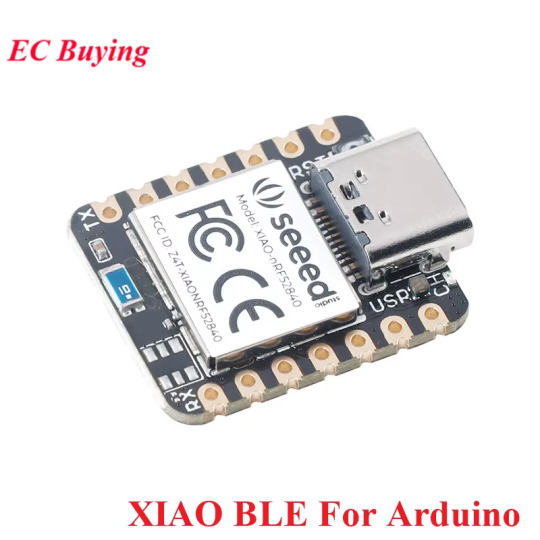
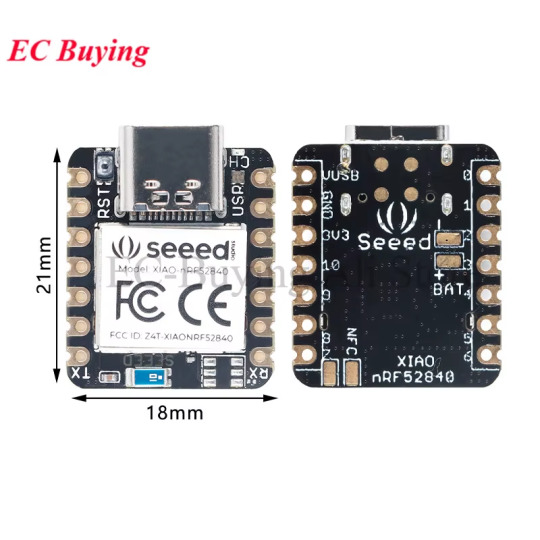
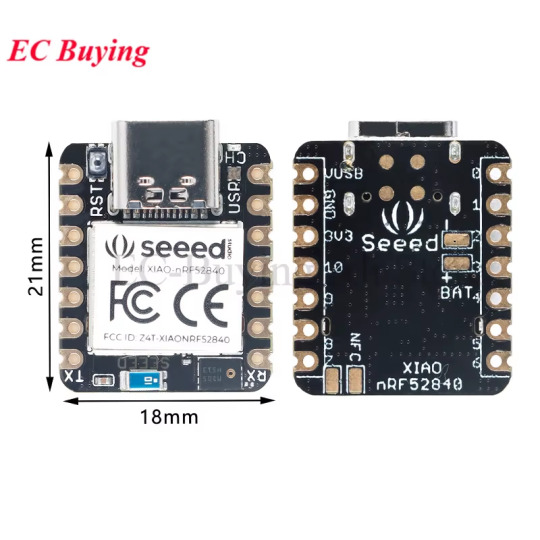
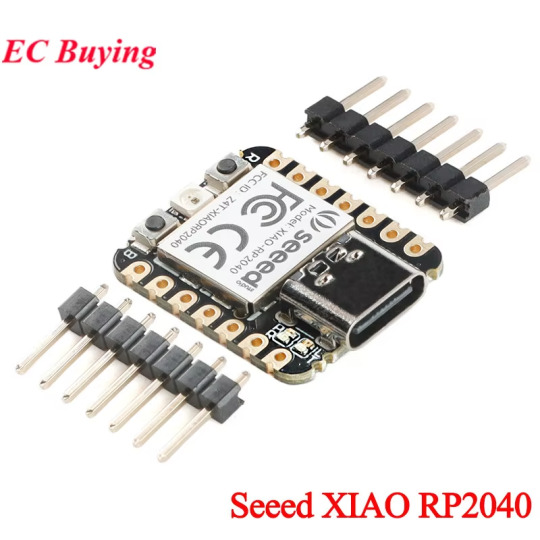
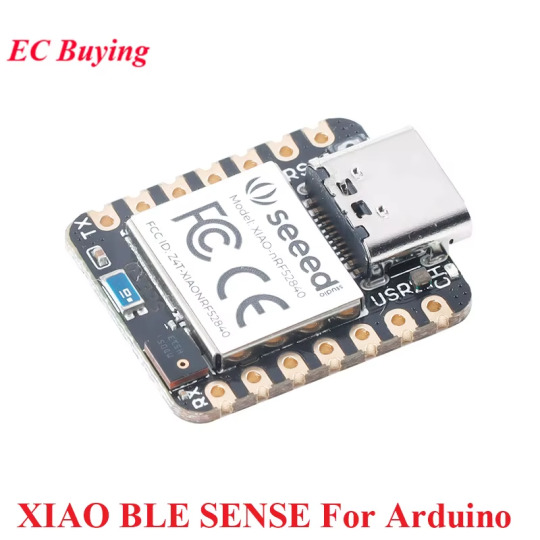
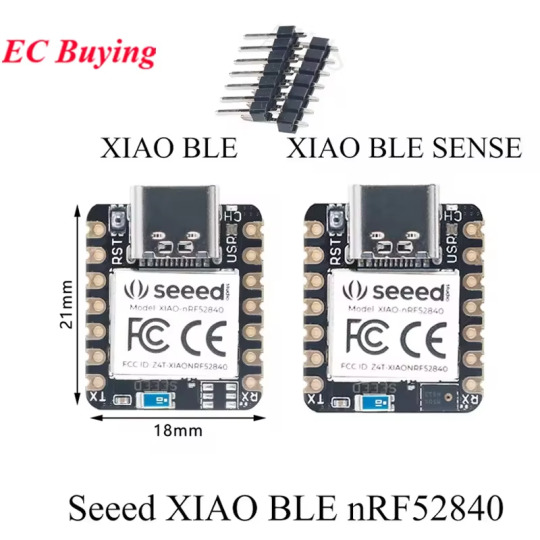
Ideal for IoT, Wearables & TinyML Projects Seeeduino XIAO BLE SENSE - Advanced IoT Microcontroller ⚡ Powerful ARM Cortex-M4 CPU with FPU @ 64 MHz 🌐 Bluetooth 5.0, NFC, Zigbee for wireless connectivity 🔋 Ultra-low sleep power: 5 μA deep sleep mode 🔋 BQ25101 chip for lithium battery charge management Price Now: USD 5.02 (Original price: USD 6.70, 25% off) 🔗Click & Buy:
#SeeeduinoXIAO#BLEsense#ArduinoFun#RP2040#nRF52840#BluetoothMagic#MicrocontrollerLife#TechTinkering#GadgetGoals#MakerMovement#DIYProjects#ElectronicsEnthusiast#CodingAdventures#TechieTuesdays#InnovateWithUs#SmartTech#ArduinoCommunity#SeeedStudio#GeekyGear#TechSavvy#CircuitBoardLove#CreativeCoding#BuildAndLearn#HandsOnTech#FutureOfMaking#NerdyByNature#GizmoGuru#RoboticsFun#TechieVibes#ExploreElectronics
0 notes
Text
Price: [price_with_discount] (as of [price_update_date] - Details) [ad_1] Asleesha Silver Keychain Voice Recorder 8GB Silver Keychain Voice Recorder, Vandlion Voice Activated Recorder with Triple Noise Reduction, Small Audio Recorder for Lecture, Interview, Meeting and More. Ideal for memos, lectures, meetings, interviews and more. It is a wonderful gift for teachers, students, lawyers, writers, etc. Please feel free to contact our support team for any questions or issues you may have. We are happy to provide support for all our customers. This great-looking key chain is a voice-activated recorder asleesha that is built right into a sturdy metal housing. 1. Shell made from metal and zinc alloy material, anti-fall strongly 2. Professional recording pen chip of ATJ3315D, HD recording 3. Timestamp,Name the recording files by date automatically 4. AGC function, adjusts the noise source automatically 5. Voice Recorder,MP3 player,and USB flash drive, voice activated mode 7. Detect low battery and save the recording files automatically 8. Playback function: One key to record/save 9. Plug into headphones to listen to music 10. Password protection 12. Built in rechargeable 150mAh lithium battery, long battery life 13. USB 2.0 connector, easy to upload and download files. Specification: 1. Recording Format: WAV/192kpbs 2. Music Playback Format: WMA/WAV/MP3/OGG etc. audio format 3. Battery Recording Time: About 15 hours 4. Battery Playing Time: About 10 hours 5. Battery: 150mAh lithium battery Battery charging time: About 2 hours 6. Noise-signal ratio: 80db 7. USB Interface: USB 2.0 High Speed 8. 16GB Saving recording time: About 188H/ 32GB saving recording time: About 376H 9. Working Temperature: -5 to 40 degrees 10. Recording Sample Rate: 48KHZ 11. Headphone Jack: USB jack 12. Compatible System: Windows 2000&above [MULTI-FUNCTION] with 8GB of memory, it can be used as a voice recorder, MP3 player, USB flash drive, with its fashion black or silver styling, it can be used as a backpack buckle, key chain, decorations, to meet your all needs. [25-HOUR CONTINOUS RECORDING] With built-in large-capacity battery, after a full charge, it can continuously record for 28 hours, or continuously playback for 18 hours, standby for 60 days. [ONE-BUTTON RECORDING] When the earphone is not inserted into the recorder, by turning it on, the recording stars, by turning it off, the recording files are saved. When the earphone is plugged into the recorder, it is a stylish MP3. [COMPACT AND PORTABLE] Conveniently shaped for your key ring. When recording, there's no sound or light, hard to be noticed. With intelligent noise reduction, the recording sound quality is clear. [WITH TIME STAMP] with synchronization time software in the voice recorder, after being connected to the computer, you can synchronize the next recording file time to the computer's time, accurate to the hour/minute/second, which makes it more convenient for you to manage recording files. [ad_2]
0 notes
Text
The Technology Behind Inverter LED Bulbs Explained

Inverter LED bulbs are revolutionizing home lighting by providing a reliable source of illumination during power outages. These innovative bulbs combine the benefits of LED technology with built-in inverters, ensuring continuous light when you need it most. Here’s a detailed look at the technology behind inverter LED bulbs.
What Are Inverter LED Bulbs?
Inverter LED bulbs are specially designed bulbs that contain an integrated inverter and a rechargeable battery. Unlike traditional indoor or outdoor LED Lights, these bulbs can switch seamlessly to battery power during a power outage, ensuring uninterrupted lighting. The integration of the inverter and battery within the bulb makes it a compact and convenient solution for emergency lighting.
How Do Inverter LED Bulbs Work?
Inverter LED bulbs operate like regular LED bulbs when there is a stable power supply. They use the mains electricity to provide light and simultaneously charge the internal battery. When a power outage occurs, the built-in inverter instantly switches the power source from the mains to the internal battery. This seamless transition ensures that the bulb remains lit without any noticeable flicker or delay.
Components of Inverter LED Bulbs
The key components of inverter LED bulbs include:
LED Chips: These are the primary light-emitting components that provide bright and energy-efficient illumination.
Inverter Circuit: This circuit is responsible for switching the power source from the mains to the battery during an outage.
Rechargeable Battery: Typically, lithium-ion batteries are used due to their high energy density and long lifespan. The battery powers the LED chips during power failures.
Control Circuit: This manages the charging of the battery and ensures the seamless switching between power sources.
Advantages of Inverter LED Bulbs
Uninterrupted Lighting: The primary advantage is the continuous light during power outages, which enhances safety and convenience.
Energy Efficiency: LED technology ensures low power consumption, extending the battery life during outages.
Longevity: With proper use, inverter LED bulbs can last for several years, providing a reliable lighting solution.
Easy Installation: These bulbs fit into standard light sockets, making them easy to install without any additional wiring or equipment.
Conclusion
Inverter LED bulbs combine cutting-edge technology with practical benefits, offering a reliable and energy-efficient solution for lighting during power outages. By integrating an inverter and a rechargeable battery into a standard LED bulb, these innovative devices provide seamless illumination, ensuring your home remains lit even when the grid fails.
0 notes
Text
Revolutionize Your Tools: Unveiling the Secrets of Kobalt 24V Battery Technology
Have you ever marveled at how a simple battery can transform a powerless tool into a powerhouse of productivity? It's almost like magic, isn't it? Today, we're diving into the world of the Kobalt 24V Max battery, a technological gem that's turning heads in workshops and garages everywhere. Whether you're a DIY enthusiast or a professional handyman, understanding the secrets behind this battery tech could be a game-changer for your toolkit.
What is the 24V Max Kobalt Battery?
Imagine a battery that not only powers a tool but breathes life into it. The 24V Max Kobalt isn't just any battery—it's the heart of the Kobalt tool family, designed to deliver unmatched power and performance.
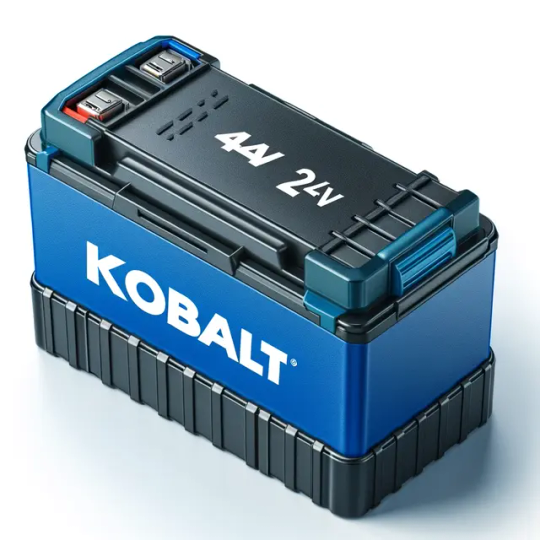
The Technology Behind the Power
What makes the 24V Max Kobalt stand out? It's all about the cutting-edge technology packed inside. From lithium-ion cells to smart-chip management, each component works synergistically to provide reliable power.
Benefits of Upgrading to 24V Max Kobalt
Upgrading to a 24V Max Kobalt means more than just longer battery life. It means experiencing your tools on steroids—faster, stronger, and more efficient than ever before.
Compatibility with Tools
One of the biggest questions is compatibility. Will this battery work with your existing Kobalt tools? Rest assured, this battery series is designed to complement a wide range of Kobalt tools, making it a versatile choice for any toolkit.
Maximizing Your Battery Life
To get the most out of your 24V Max Kobalt, proper care is crucial. Think of it like caring for a pet—you need to provide the right environment and routine to ensure a long and healthy life.
Must-Have Accessories
To enhance your experience, consider investing in accessories like fast chargers or power gauges that help you make the most of your Kobalt battery.
Real-World Applications
From building decks to fixing cars, the 24V Max Kobalt powers a wide array of tools. It’s like having a trusty sidekick by your side, ready to tackle any project.
Maintenance Tips
Good maintenance involves more than just occasional cleaning. It includes proper storage, regular charging, and avoiding extreme temperatures.
Safety First: Handling Your Battery
Handling a powerful battery requires caution. Always follow the manufacturer’s guidelines to avoid injury and prolong the life of your battery.
Innovative Features of Kobalt Batteries
Kobalt batteries aren't just about power; they include features like charge indicators and temperature controls that set them apart from the competition.
User Testimonials
Hear from real users who have experienced the transformation in their tools thanks to the 24V Max Kobalt. Their stories illustrate the practical benefits and real-world impact of upgrading.
Cost vs. Value: Is It Worth the Investment?
While the upfront cost might be higher than standard batteries, the long-term value of a 24V Max Kobalt—measured in durability and performance—can justify the investment.
Where to Buy and What to Look For
Knowing where to buy and what to look for in a Kobalt battery can save you time and money. Opt for reputable sellers and check for warranties.
Conclusion
The Kobalt 24V Max battery isn't just a tool; it's a revolution in your hands. Transform your workbench, enhance your productivity, and unleash the full potential of your power tools with this incredible technology. It's not just about working harder; it's about working smarter.
0 notes
Text

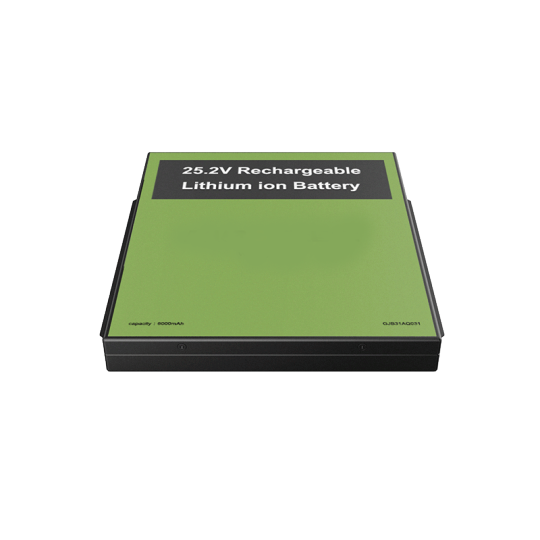
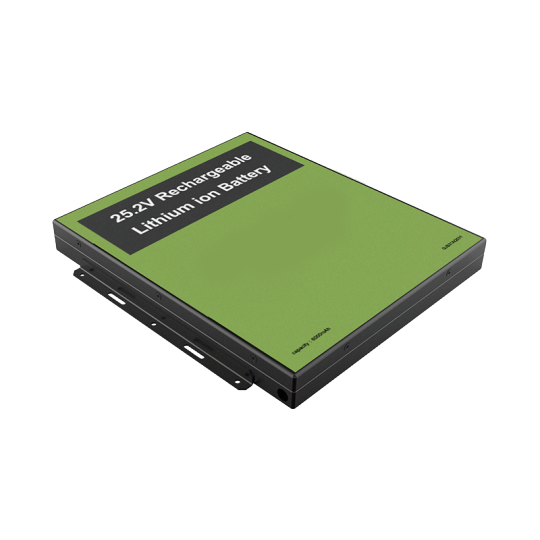
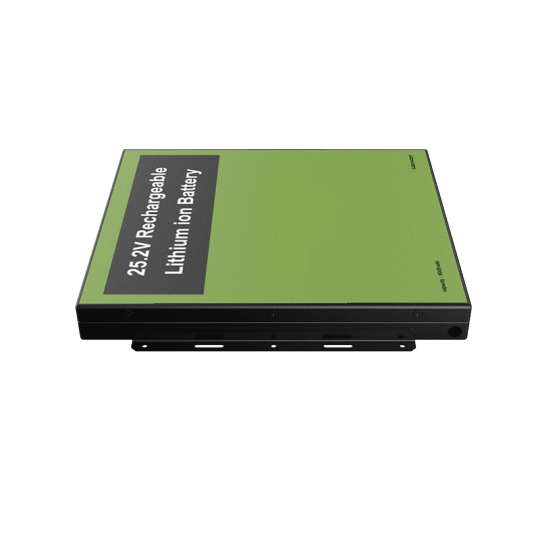
Febatt -40℃ low-temperature discharge, 25.2V 6000mAh 18650 specialized notebook low-temperature lithium battery
Cell model: 18650/2200mAh/3.6V
Battery specification: HPB-513-32/6000mAh/25.2V
Nominal voltage: 25.2V
Nominal capacity: 6000mAh
Charging voltage: 29.4V
Charging current: ≤5A
Discharging current: 3A
Instantaneous discharge current: 6A
Discharge cutoff voltage: 17.5V
Finished product internal resistance: ≤200mΩ
Battery weight: 1.5kg
Product size: 220*170*25mm (Max)
Charging temperature: 0 ~ 45℃
Discharging temperature: -40 ~ 55℃
Storage temperature: -20 ~ 45℃
Battery casing: Specialized sheet metal casing
Lithium protection: Short circuit protection, overcharge protection, over-discharge protection, overcurrent protection, balancing, with IIC communication, etc.
Application field: Specialized notebook devices
Product features:
-- Current: Can sustain a maximum continuous discharge of 60A, with short bursts of high current discharge up to 120A for a few minutes.
-- Data communication management: Uses imported software management chip, with IIC communication function for precise data transmission and accurate temperature control, minimizing safety hazards.
-- Cell characteristics: Uses cells capable of low-temperature discharge down to -40 degrees Celsius.
-- High cycle life of the battery pack, in line with the values of low-carbon, energy-saving, and environmental protection.
0 notes
Text
Shanghai Yongming Electronic Co.,Ltd
Shanghai Yongming Electronic Co., Ltd. is a capacitor manufacturing enterprise integrating design, research and development, production, sales, and service. The company was established in 2004. After almost 20 years of hard work, it has accumulated rich experience in independent research and development and production, trained a group of high-quality technical management teams, and formed a mature capacitor manufacturing process.
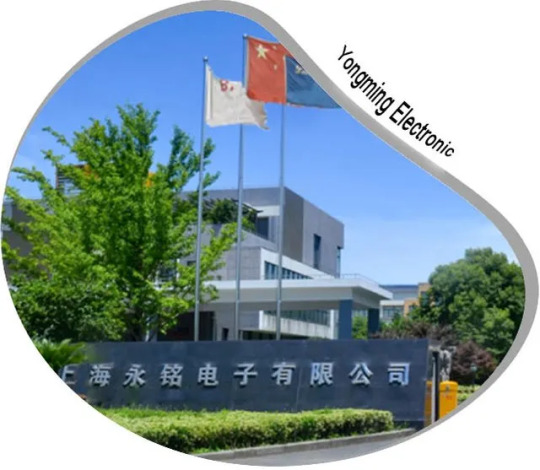
Our main products are diversified Aluminum Electrolytic Capacitors, which includes Aluminum Electrolytic Capacitor (Radial Leaded Type, SMD Type, Snap-In Type, and Screw Terminal Type), Conductive Polymer Aluminum Solid Electrolytic Capacitor, Conductive Polymer Hybrid Aluminum Solid Electrolytic Capacitor, MLPC, MLCC and EDLC.
Our product philosophy is: Ask YMIN for your all capacitor application. It is precisely because of this sentence that we YMIN constantly seek new partners in difficult situations, and our company’s products are developing faster and faster.We have products that are no inferior to those of our international counterparts, such as mlcc that can compete with murata, laminated capacitors and aluminum electrolytic capacitors that can compete with panasonic and nichicon.

Development History -2001: Shangyu Yongming Electronics Co., Ltd. was established in Shangyu, focusing on electrolytic capacitors for lighting power supplies. -2005: Renamed shanghai Yongming Electronics Co.Ltd. moved to Fengxian District, Shanghai, andlaunched miniaturized electrolytic capacitorsfor lighting power supplies. -2008: We are the first in the industry to introduce adedicated series of LED drive power supplies. -2010: We are the frst in the industry to introduce 9mm high-end, full-voltage high-end power supply products. -2011: Our company is the first to promote 600Vultra-high voltage horn type and bolt type -2012: We are the frst to introduce a dedicated series of 7mm high-end, full-voltage high-endpower supplies. -2013: We pioneered full-voltage,small-size SMDchip electrolytic capacitors. -2014: We are the first to introduce the smaller sizeLKM series and the outdoor power supplyultra-low temperature start-up LKZ series. -2015: We are the first to promote the Dc chargingpile series and the LKJ series for smart meters. -2016: Miniaturized Cw3s series for Dc charging piles. -2017: Renamed as Shanghai yongming ElectronicsCo. Ltd.. it launched thin,full-voltage, 5mmhigh-SMD SMD SMD VMM series, a full range ofsolid-state products, high-voltage for fastcharging sources, and ultra-small kc series. -2018: Large-capacity thin solid capacitor VPs serieslow-ESR large-capacity miniaturized NPG series, ultra-small diameter NPM series, solid-liquid hybrid capacitor. -2019: Laminated polymer solid capacitor, super capacitor,ultra-small size,low impedanceliquid chip V3W series. 135°c hiah temperature resistant liquid chip VKL(R)series. -2020: Lithium-ion secondary battery, high voltagehigh Q MLCC,3.95mmL liquid/solid state chipaluminum electrolytic capacitor. -2021: Launched supercapacitor business unit modules (horn type, lead type) -2022: Construction of the third phase of the factory started, adding 28,000 square meters of production area Laminated products launch ESR 3mΩ -2023: Launched new product line of conductive polymer tantalum electrolytic capacitors Liquid launches high capacity density products (KCM) suitable for gallium nitride
Business unit introduction
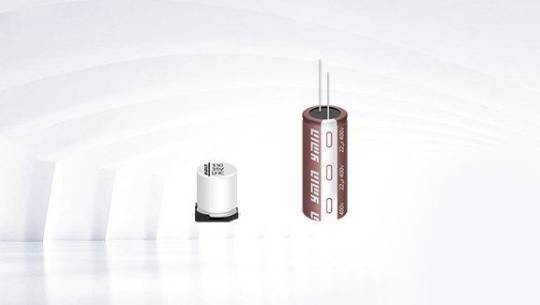
The Liquid Miniature Business Division has been involved in R&D and manufacturing since 2001. It has an experienced R&D and manufacturing team and continues to steadily produce a variety of high-quality miniaturized capacitors to meet customers’ innovative needs for capacitors. The Liquid Small Business Division has two types of packages: liquid chip aluminum electrolytic capacitors and liquid lead aluminum electrolytic capacitors. Its products have the advantages of miniaturization, high stability, high capacity, high voltage, high temperature resistance, low impedance, high ripple, and long life. It is widely used in new energy automotive electronics, high-power power supplies, smart lighting, gallium nitride fast charging, home appliances, photovoltaics and other industries.
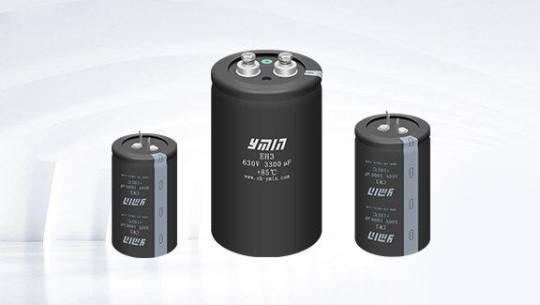
The Liquid Large Business Division was established in 2009 and focuses on the R&D and manufacturing of horn-type and bolt-type aluminum electrolytic capacitors. Liquid large-scale aluminum electrolytic capacitors have the advantages of ultra-high voltage (16V~630V), ultra-low temperature, high stability, low leakage current, resistance to large ripple current, and long life. The products are widely used in photovoltaic inverters, charging piles, vehicle-mounted OBC, and outdoor Energy storage power supply, industrial frequency conversion and other application fields. We give full play to the advantages of “a professional team that integrates new product development, high-precision manufacturing, and application promotion”, and towards the goal of “let there be no difficult container for charging”, we are committed to satisfying the market with technological innovation and combining different applications of customers demand, carry out technology docking and manufacturing connection, provide customers with technical services and special product customization to meet customer needs.
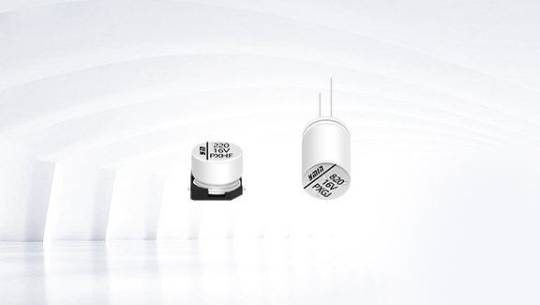
The solid-solid-liquid mixing division was established in 2017. Relying on the technology and talents of Japanese brands, it focuses on new product development, high-precision manufacturing and application promotion. Through investment in domestic advanced manufacturing equipment and continuous technological upgrades and breakthroughs, A product technology system with core competitiveness has been formed. Now it has established two product lines: solid aluminum electrolytic capacitors and solid-liquid hybrid aluminum electrolytic capacitors. The products comply with multiple certifications such as AEC-Q200 and IATF16949. Among them, solid aluminum electrolytic capacitors have the advantages of miniaturization, large capacity, ultra-low ESR, low leakage, and high current impact resistance. The products are mainly used in gallium nitride PD fast charging, industrial control, artificial intelligence, IDC servers, military industry and other industries; Solid-liquid hybrid aluminum electrolytic capacitors have the advantages of high reliability, wide temperature stability, wide frequency stability, ultra-low ESR, earthquake resistance, and high current impact resistance. The products are mainly used in the new energy automotive electronics industry. The two major product lines have won the trust and high praise of many well-known domestic and foreign brand manufacturers for their reliable product quality and excellent product characteristics.

The Supercapacitor Division was established in 2017. It has gathered a professional team integrating new product development, high-precision manufacturing, and application promotion. It has made every effort to introduce high-quality foreign materials and process technologies, forming a highly matched product technology system. Now we have a comprehensive range of domestic and foreign supercapacitors: such as cylindrical lead type, horn type, button type, module type, SMD chip type, 3.8V lithium ion capacitor, etc. The products comply with State Grid certification, AEC-Q200, IATF16949, etc. With multiple certifications, it is widely used in industries such as smart three-meter (electricity meter, water meter, gas meter), automotive electronics (ETC, driving recorder), new energy (wind pitch, photovoltaic), military industry (tank emergency starting power supply), etc. With the rapid development of 5G technology and the intelligent Internet of Things market, the products of the Supercapacitor Division will continue to inject development momentum into smart life and bring users a better experience.
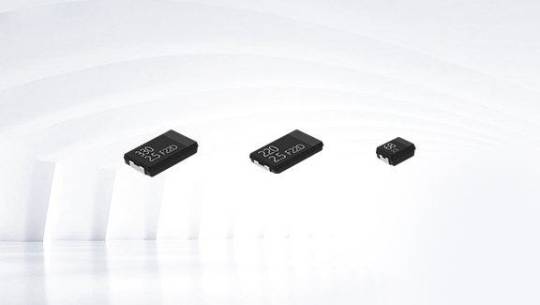
The solid-state laminated business unit has been involved in research and development since 2018 and started mass production in March 2020. It currently has a monthly production capacity of 6 million units. The laminated polymer solid aluminum electrolytic capacitor has the advantages of high voltage, large capacity, thin profile, ultra-low impedance, and resistance to large ripple current. Its ultra-low ESR and powerful filtering ability are cutting-edge achievements in the field of aluminum electrolytic capacitors and are used in Communications, military industry, Internet of Things, IDC servers, artificial intelligence and other terminals.
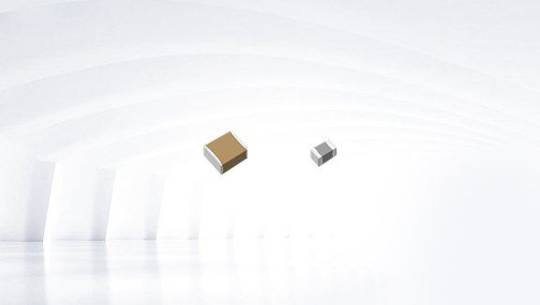
Since its establishment in 2019, the MLCC Division has always been committed to the research and development, manufacturing and application promotion of high-voltage MLCCs, fully benchmarking against Taiwanese and Japanese high-end products and technologies. Now it has X7R, NPO and other product series, with voltages from 1KV to 3KV, all of which are large-sized high-voltage products above 1206. They are widely used in adapters, switching power supplies, high-voltage power supplies, lighting devices and other products.
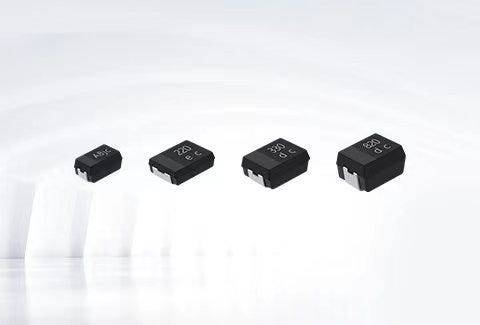
The Polymer Polymer Tantalum Capacitor Division was established in 2022. Compared with its peers, Yongming polymer tantalum capacitors have higher capacity, lower ESR and higher withstand voltage. Products are widely used in digital servers, PCs, ultra-thin chargers, automotive electronics, communications industries, base stations, switches, industrial power modules, military power supplies and other fields. Yongming polymer tantalum capacitors replace imported tantalum capacitors, which has broad prospects and is worth cultivating.
● Support the innovation and upgrading of customer products. ● Ensure the stable operation of customer products. ● Eliminate hidden dangers in the use of customer products. ● Guarantee the user experience of customer products.
Ask YMIN for your capacitor solutions.
Website:https://www.ymin.cn/ E-mail: [email protected]
#manufacturer#electronic#capacitors#electrolytic capacitors#electric vehicles#electric cars#automotive components#electronic components#factory#energy storage#energy
0 notes
Text
Inside the Innovation: Exploring Apple Watch Parts
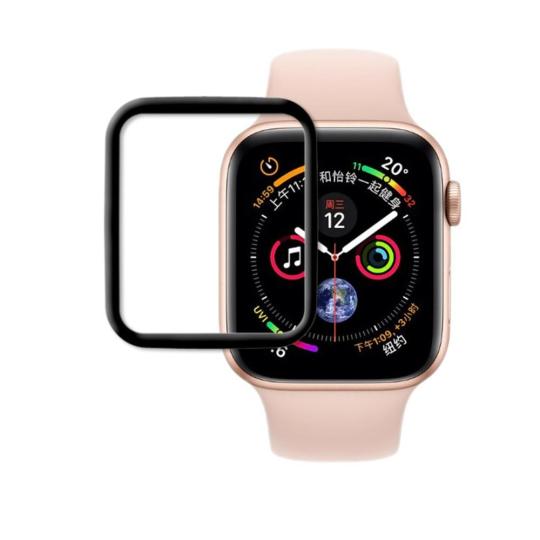
In the realm of wearable technology, the Apple Watch stands as a beacon of innovation, seamlessly blending style and functionality to revolutionize the way we interact with our devices. Behind its sleek exterior lies a complex ecosystem of meticulously engineered parts, each playing a crucial role in delivering a seamless user experience. In this blog post, we'll take a closer look at the intricate world of Apple Watch parts, uncovering the key components that power this iconic device and contribute to its unparalleled performance.
1. Display Assembly
At the heart of every Apple Watch is its vibrant display, which serves as the primary interface for interacting with apps, notifications, and features. The display assembly consists of several components, including the OLED panel, touch-sensitive digitizer, and protective glass. Apple's Retina display technology ensures crisp, clear visuals with vibrant colors and sharp contrast, providing users with an immersive viewing experience.
2. Processor and Memory
Driving the performance of the Apple Watch is a powerful System in Package (SiP) that houses the processor, memory, and other essential components in a compact, energy-efficient package. Apple's custom-designed chips, such as the S-series and M-series processors, deliver fast and responsive performance, enabling smooth multitasking, quick app launches, and efficient power management.
3. Battery
Keeping the Apple Watch powered throughout the day is a high-capacity lithium-ion battery carefully integrated into the device's compact form factor. Apple's advanced battery technology ensures long battery life, with models like the Apple Watch Series 7 offering up to 18 hours of usage on a single charge. Additionally, features like Power Reserve mode and fast charging capabilities provide added convenience for users on the go.
4. Sensors and Health Features
One of the standout features of the Apple Watch is its comprehensive suite of health and fitness capabilities, made possible by a variety of sensors integrated into the device. These sensors include the optical heart rate sensor, accelerometer, gyroscope, and ECG sensor, among others. Combined with advanced algorithms and software, these sensors enable features like heart rate monitoring, activity tracking, sleep tracking, and even fall detection, empowering users to take control of their health and well-being.
5. Connectivity
The Apple Watch seamlessly connects to the user's iPhone and other Apple devices via Bluetooth and Wi-Fi, enabling features like notifications, messaging, and Siri voice commands. In addition, models with cellular capabilities offer independent connectivity, allowing users to make calls, send messages, stream music, and access data directly from their wrist, even when their iPhone is out of range.
6. Housing and Bands
The housing of the Apple Watch is crafted from high-quality materials such as aluminum, stainless steel, and titanium, ensuring durability and premium aesthetics. The device is also customizable with a variety of interchangeable bands made from materials like silicone, leather, and stainless steel, allowing users to personalize their Apple Watch to suit their style and preferences.
The Apple Watch represents the pinnacle of wearable technology, combining cutting-edge innovation with elegant design to deliver a transformative user experience. From its vibrant display and powerful processor to its advanced sensors and customizable bands, every component plays a vital role in shaping the functionality and appeal of this iconic device. Whether you're tracking your fitness goals, staying connected on the go, or simply expressing your personal style, the Apple Watch offers a seamless and intuitive companion that enhances every aspect of your daily life. So, the next time you glance at your wrist to check the time or respond to a notification, take a moment to appreciate the intricate craftsmanship and ingenuity of the Apple Watch parts that make it all possible.
0 notes
Text
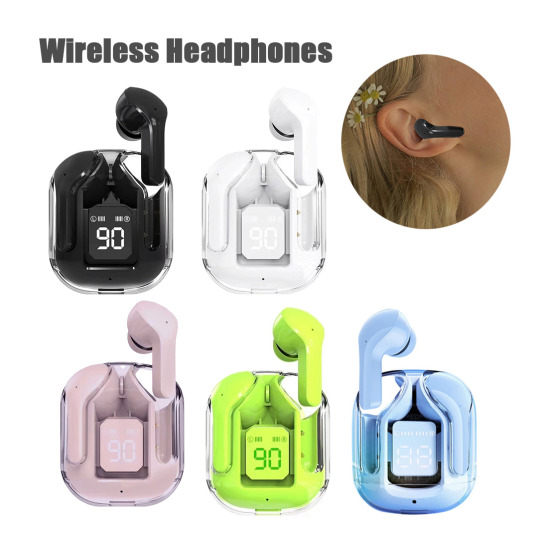
Buy Now
Mini Transparent Earbuds Wireless Bluetooth Headset Digital Display ENC Noise Reduction True Wireless Earbuds Sports Music
The Muizin T6 Wireless Transparent Earbuds combine cutting-edge technology with sleek design, making them an ideal choice for music enthusiasts and active individuals. Let’s delve into the features that set these wireless earbuds apart:
ENC Noise Canceling & HiFi Stereo Sound: These best wireless earbuds feature advanced noise reduction technology, ensuring crystal-clear phone calls and immersive sound. The titanium dome composite membrane moving coil speakers deliver a wide sound field and powerful bass, enhancing your music experience.
Smart Touch Control & Comfortable Fit: With touch-sensitive controls on each earbud, you can easily manage calls, adjust volume, and switch tracks without reaching for your phone. The three different ear tip sizes ensure a snug and comfortable fit, perfect for extended wear.
Advanced Bluetooth Chip & Auto Quick Pairing: The Muizin T6 noise cancelling earbuds utilize a high-computing-power Bluetooth chip, resulting in stable signals and clear audio. After the initial connection, they automatically pair with your device when you open the charging case.
Fast Charging & Long Battery Life: Enjoy up to four hours of playback time on a single charge, and extend it up to 20 hours with the portable charging case. Plus, a quick 10-minute charge provides 1.5 hours of use.
LED Digital Display & Colorful Design: The charging case features an accurate LED display, showing the power status of both earbuds and the case. The translucent design adds a futuristic touch, available in five vibrant colors.
Long Endurance: With a low-power chip and a large-capacity lithium battery, it can be used continuously for 5 hours when fully charged, and can last for 20 hours when paired with a charging box, allowing you to fully enjoy the fun of music and games.
Bluetooth-compatible 5.3: The new generation Bluetooth-compatible 5.3 main control chip significantly improves its anti-interference ability in complex environments, with lower power consumption, faster transmission, and more stable connections.
Comfortable to Wear: In-ear Bluetooth-compatible wireless earphones, silicone earcaps are comfortable to wear. Open the earphone case and take it out to automatically pair, providing an indescribable listening experience.



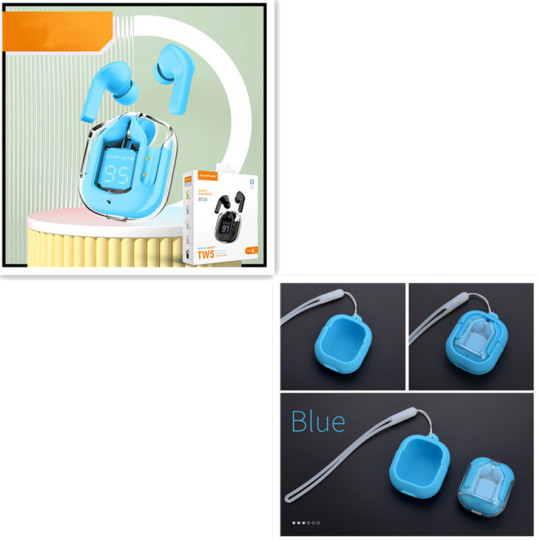
#transparent earbuds#wireless earbuds#best wireless earbuds#best noise cancelling earbuds#wireless earphones#best earbuds#muizin
0 notes
Text
0 notes